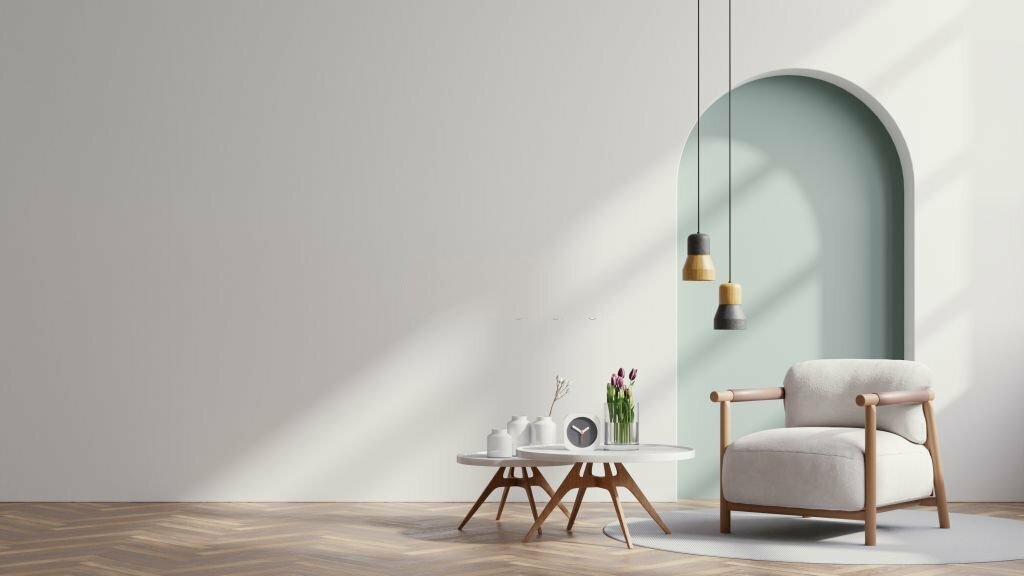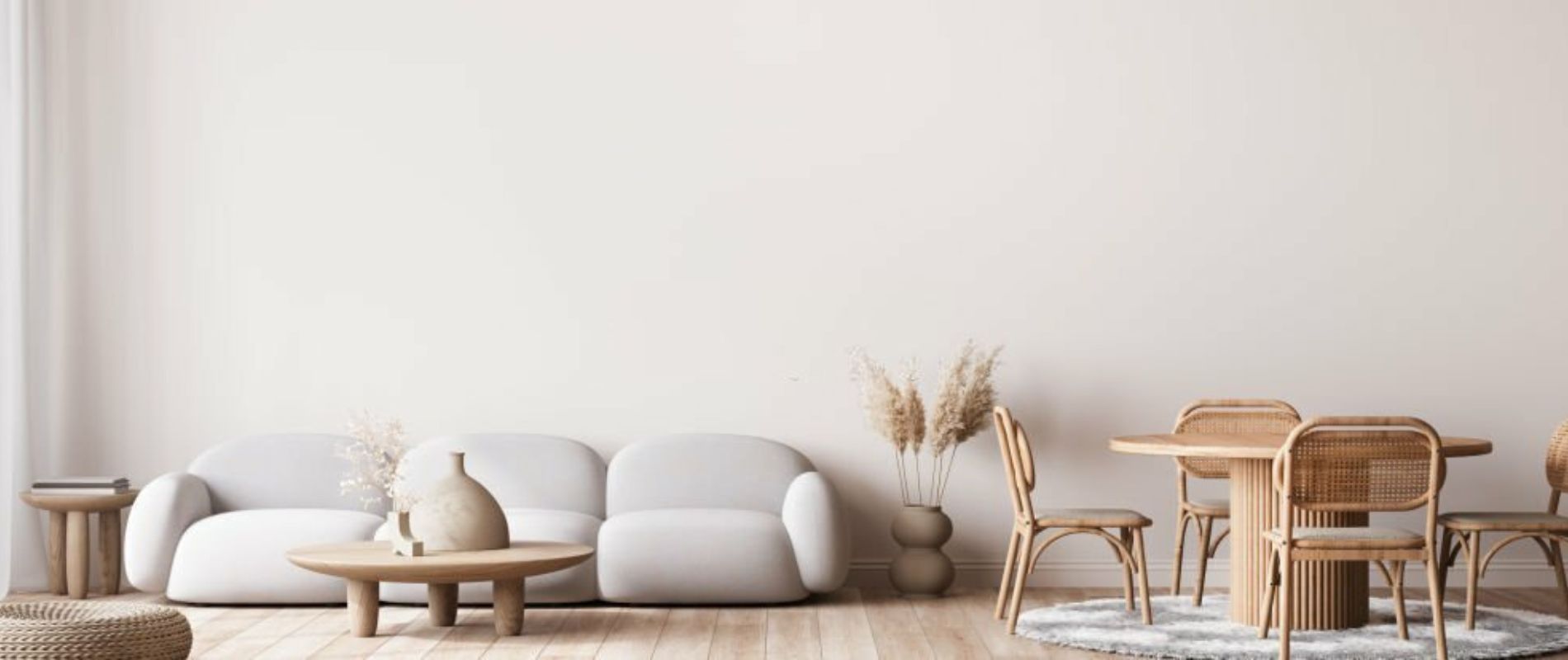In the world of simplicity, less has truly become more! When it comes to home decor, minimalism has emerged as a timeless and refreshing approach, redefining the way we perceive and adorn our living spaces. Minimalist home decor is more than just a design choice; it’s a lifestyle that celebrates the beauty of simplicity and functionality.
So, let’s embark on this minimalist adventure, discovering the art of paring down to the essentials and finding joy in the simplicity of a well-curated living space. Get ready to transform your home into a haven of tranquility and timeless beauty with these five tips for minimal home decor.
Tip 1: Decluttering
Decluttering is a foundational step in achieving a minimalist design, emphasizing the importance of simplicity, functionality, and a sense of calm within a space. Removing unnecessary items not only enhances the visual appeal of a room but also contributes to a more organized and efficient living or working environment. Decluttering aligns with the core principles of minimalism by prioritizing what is essential and eliminating distractions, allowing the beauty of a well-curated space to shine through.
Methods for Effective Decluttering
Effective decluttering involves a systematic and intentional approach to reducing the number of possessions in a space. Start by assessing each item and asking yourself whether it serves a purpose or brings joy. You can also get some help from these Cleaning Tips. Embrace the KonMari method, which encourages discarding items that don’t “spark joy.” Consider categorizing items and decluttering one category at a time, such as clothing, books, or sentimental items. Be decisive about letting go of duplicates, unused items, and things with no significant value. Donate, sell, or responsibly dispose of items to ensure a mindful and sustainable decluttering process.
Storage Solutions for a Minimalist Home
After decluttering, efficient storage solutions are essential to maintaining a minimalist aesthetic. Opt for furniture with built-in storage, such as bed frames with drawers or coffee tables with hidden compartments. Use open shelving for a clean and accessible display of items, and employ baskets or bins for organizing smaller belongings. Consider storage solutions that blend seamlessly with the overall design, minimizing visual clutter. The goal is not just to hide belongings but to create a sense of order and purpose within the space.
Tip 2: Neutral Color Palette
Colors play a crucial role in shaping the aesthetics of a minimalist design. In minimalist spaces, the emphasis is on simplicity, clarity, and a sense of calm. Neutral colors, characterized by tones such as white, gray, and beige, are fundamental in achieving this aesthetic. They provide a clean and uncluttered backdrop, allowing other design elements and functional aspects of the space to take center stage. The impact of colors in minimalist design goes beyond visual appeal; it contributes to the overall tranquility and balance of the environment.
Choosing a Neutral Color Scheme
When adopting a minimalist approach, choosing a neutral color scheme forms the foundation of the design. Opt for tones that are subdued and understated, creating a sense of openness and airiness. White walls, light gray furnishings, and natural tones not only reflect a minimalist ethos but also enhance the perception of space. Neutral colors promote a timeless and versatile backdrop that easily integrates other design elements, ensuring a cohesive and harmonious look throughout the space. If you are struggling to select the perfect palette, you should definitely check out these trendy Bedroom Colour Ideas for your room.
Accent Colors for Added Interest
While a neutral color palette forms the core of minimalist design, the introduction of accent colors can add visual interest and warmth to the space. Select a limited range of accent colors – muted blues, greens, or earthy tones – and use them sparingly to highlight specific elements. This can include throw pillows, artwork, or select furnishings. The strategic use of accent colors introduces a touch of personality without compromising the overall simplicity of the design. The key is moderation, ensuring that the accents enhance rather than overwhelm the minimalist aesthetic.
Tip 3: Quality Over Quantity
In the minimalist and refined space, prioritizing mindful purchasing is essential. Instead of succumbing to the allure of impulse buys or the temptation of mass-produced items, take a thoughtful approach to each purchase. Consider the necessity and functionality of the item, ensuring that it aligns with your overall design vision. Mindful purchasing prevents unnecessary clutter and encourages a conscious and intentional curating of your living or working environment.
Investing in Timeless Pieces
Opting for quality over quantity involves investing in timeless pieces that withstand passing trends. Choose Handmade Furniture, decor, and other items that have enduring appeal and are crafted with durability in mind. Timeless pieces not only contribute to the longevity of your design but also serve as focal points within the space. Look for well-made, classic designs that transcend fleeting fashion, ensuring that your environment remains sophisticated and relevant over time.
Avoiding Impulse Buys
Resist the urge to make impulse purchases, as these can disrupt the carefully curated atmosphere of a minimalist space. Take the time to evaluate whether an item aligns with your design goals and whether it genuinely adds value to your living or working environment. Avoiding impulse buys not only prevents unnecessary clutter but also fosters a more intentional and considered approach to your possessions. This approach ensures that each item in your space contributes to the overall aesthetic and functionality.

Tip 4: Thoughtful Decor Items
Every decor item should have a purpose and contribute to the overall aesthetic. Instead of opting for an abundance of decorative pieces, focus on selecting meaningful decorations that hold personal significance or align with the theme of the space. Whether it’s Wall Art Prints, sculptures, or sentimental items, each piece should tell a story or evoke a specific emotion. By curating a collection of thoughtful and meaningful decor items, you not only enhance the visual appeal of the space but also infuse it with a sense of personal identity.
Incorporating Natural Elements
Bringing nature indoors is a powerful way to enhance a minimalist design. Consider incorporating natural elements into your decor, such as potted plants, stones, or wooden accents. These elements not only add visual interest but also contribute to a sense of warmth and tranquility. Select plants that are easy to maintain and fit the scale of the space. Natural materials like wood or stone can be integrated into furniture or decor items, providing a tactile and organic contrast to the clean lines often associated with minimalism.
Limiting Decorative Clutter
One of the core principles of minimalism is the reduction of unnecessary elements, and this applies to decor as well. Resist the temptation to overcrowd surfaces with too many decorative items. Embrace a less-is-more approach by carefully selecting a few key pieces that complement the space. This not only maintains the clean and uncluttered look of minimalist design but also allows each decor item to shine and receive the attention it deserves. Consider rotating decor items seasonally to keep the space fresh and avoid visual monotony.
Tip 5: Personal Touches
While minimalism often emphasizes simplicity and a reduction of excess, it doesn’t mean sacrificing personal style. Balancing minimalism with your unique aesthetic is key to creating a space that feels both serene and personally fulfilling. Consider incorporating elements that reflect your taste and preferences without compromising the overall simplicity. This could involve selecting furniture with clean lines in colors you love or integrating subtle patterns that resonate with your style. By striking a balance, you ensure that your living or working space feels authentically yours while maintaining the essence of minimalism.
Incorporating Sentimental Items
Minimalist design doesn’t have to be devoid of sentimental value. Thoughtfully incorporating meaningful items can add warmth and a personal touch to your space. Select a few cherished possessions – whether it’s artwork, family photographs, or heirlooms – and display them intentionally. Consider creating a dedicated area for these items to avoid cluttering the entire space. By carefully curating and showcasing sentimental pieces, you infuse your minimalist design with a sense of personal history and emotional connection. This approach allows you to surround yourself with items that bring joy and significance without overwhelming the simplicity of the overall design.
Conclusion
In conclusion, embracing a minimalist home involves mindful decluttering, strategic design choices, and the intentional integration of personal touches. By following the tips outlined and exploring the beauty of simplicity, you can cultivate a balanced and personalized minimalist space that reflects both tranquility and individuality.



